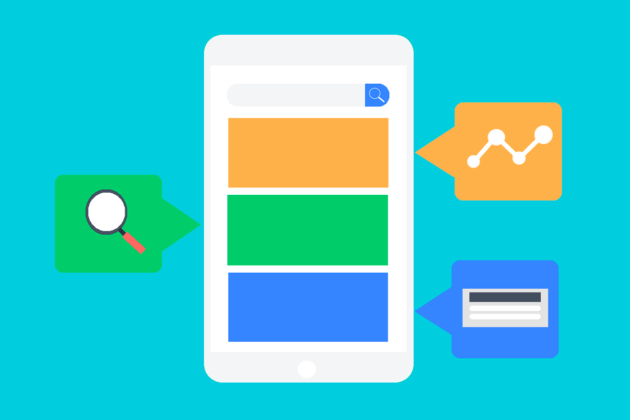Customers that have a positive experience with your company’s website or mobile app are more likely to become long-term, repeat clients.
That doesn’t imply that small firms and startups can’t compete with big enterprises because of their brand recognition and higher marketing spending.
There is an unfair edge in design for smaller organizations since their websites and applications do not have to be so bulky. Smaller companies. Customers will be glad to return to your site if you provide them with an easy-to-use, intuitive, and visually appealing experience. Repeat business can only be generated if customers comprehend and appreciate a company’s product.
What exactly is User Experience (UX)?

Usability is at the heart of user experience design, sometimes called ‘interaction design.’
It’s like drawing out the plans for a home. A blueprint includes everything from the number of bedrooms to the location of windows to the direction doors move. Making sure the home is habitable and has adequate space for your belongings is a key part of the planning process.
When designing your website’s user experience, the same principles apply. Start with the process of UX design and then go through the learning process of demographics for a business website.
Recommended for you: 10 Tips to Improve the Design of an eCommerce Website.
A couple of quick and interesting statistics to get you going about UX

- More than half of online visitors visit a website for less than 15-20 seconds, according to Time News. To attract a person’s attention, showcase your services, and convince them that your organization is worth their time, you have only 15 seconds.
- As per BBC News, the attention span of an adult is 9 seconds. Page views that lasted less than four seconds made for over a quarter of all visits in 2012.
- In addition, around half of the words on a web page with less than 111 words are read (and only 28 percent of the words on a website page with more than 593 words are read).
- According to research, a website’s overall design contributes 75% to its trustworthiness.
- More than 94% of initial impressions are influenced by design.
Best ways to help you improve the UX design of your business website!

1. Emphasize your targeted audience

Even though most organizations have two or three distinct online audiences, it is impossible to develop content that appeals to all of them at the same time.
Strong websites include content, navigation, and message that focus on helping the core audience accomplish their objectives. Consequently, search engines will be able to pick up on stronger on-page interaction signals (the ones that communicate with them).
You must not disregard the other’s opinion. Secondary and tertiary audiences may be guided to pages with their message and user flows via navigational aids like CTAs and menu items.
2. Make sure the page speed is excellent for the user

In this busy era, no one would like to wait for a webpage to load completely in 30-60 seconds. Many platforms are now accessible to content consumers all over the globe because of the proliferation of mobile devices.
At Starbucks or on their laptop while watching TV, people anticipate a speedy response to the material they are looking for. It’s common for them to bounce back if they don’t receive it.
For the user, slow page loading might be an interruption and a source of an annoyance since they don’t have the time to wait for the page to load. According to Section.io, if a user spends more than 5-10 seconds waiting for the page to download than the normal time, there are 10-15% more chances of bouncing.
Then, where do we move from this point on?? Take the test. You may check your page speed for free using Google’s free service. Google will also give you some pointers on speeding up your mobile and desktop load times.
Compress the pictures before you place them on your website. Compressing image files utilizing services like compressor.io may help you speed up your web pages considerably since the image file size is one of the primary reasons for poor page speed.
3. Ensure easy navigation

Navigating a website is similar to going shopping at a mall. A directory, signs, and a clear route may help you find what you need in the fastest time possible.
It’s the same when you’re looking through a website: You’re more likely to stick around and locate what you’re searching for if fewer clicks and actions are involved.
The bounce rate and conversion rate are directly influenced by online navigation. You may assist your visitors through the sales funnel by providing them with a clear route to follow on your website.
You may like: 13 Tips for Building an Effective Business Website.
4. Design a user-friendly website

You can do several things to make your content and your website more user-friendly, including short forms and easy checkout options. In simple words, the main aim is to simplify the UI/UX. The mobile-friendliness test from Google is a fantastic place to start when evaluating your website.
In today’s industry, being mobile-friendly may not be enough. Your customer’s digital experience on their mobile devices will be much enhanced if your website is mobile-optimized or responsively designed.
Regarding digital marketing, your website should be at the top of the list. A customer’s experience and comments regarding your services will play a crucial role in bringing more business to your firm.
Because of this, a website must be sleek, contemporary, mobile-friendly, and user-friendly to be effective.

5. Embed pictures to narrate a story

Focus on photos that appeal to your target audience to convey what your brand is all about on your website. If you don’t have your photographs on hand, a wide variety of stock pictures are available. Free pictures may be found on websites like Unsplash, Pexels, and Pixabay.
Jonathan recommends locating a collection of stock photos taken by the same photographer or group of photographers.
“Doing this helps you keep a consistent style across your website,” he explains.
Your website will seem more professional and trustworthy as a result.
6. Get rid of those 404s!

Soft 404 errors (page not found) aren’t punished harshly by search engines, but users are. People click on links and images because they believe they will lead them to their desired destination.
User frustration is further compounded when they see 404 errors on your site since it stops their trip around your site. You may use Google Webmaster tools to see whether there are any 404s on your website.
7. Ask for customer feedback

If you want your firm to be successful, you must listen to your clients. Sometimes, user feedback is more important than the employees working in the production or quality control team. You can also create or embed a poll on the website asking users to rate the experience.
Ask questions such:
- What efforts can be done to enhance the UI/UX?
- When it comes to future features, what would you want to see added?
- What do you think of our performance?
If you get the answers to all these questions, the engagement of your website will be boosted in no time. You’ll need to gather the data and analyze it for patterns. Getting more than 50% negative response is an alarming situation for you and you must consider improving things.
[BONUS] 8. Employ gestalt grouping principles for better UX!

Users’ clicking habits are often engendered by using design components that are stylistically similar across many businesses. On many websites with Gestalt Grouping Principles, CTAs are often the same in color and form to educate visitors on where to click and what to mark as a clickable possibility.
In their article “First-Time User Experience,” Chameleon explained how people only spend 50 milliseconds analyzing a website’s or product’s aesthetic attractiveness. Using the resemblance principle on your site’s homepage may help new visitors feel at ease and at home.
You may also like: The Top 10 Tips to Optimize Your Website for Mobile Devices.
Better UX is the best way to go about it!

What is a good UX design for a business website? It is a design where the end-users get maximum potential to learn and comprehend things. In simpler words, the user experience can be improved by aligning the interest of users with the information provided on the website with all the resources.
Even if the end aim seems well-understood— which can be a tedious job. Using these recommendations for UX design for your business website, you’ll be able to identify the components of your design that will resonate with your intended audience and allow you and your users to engage effectively.





